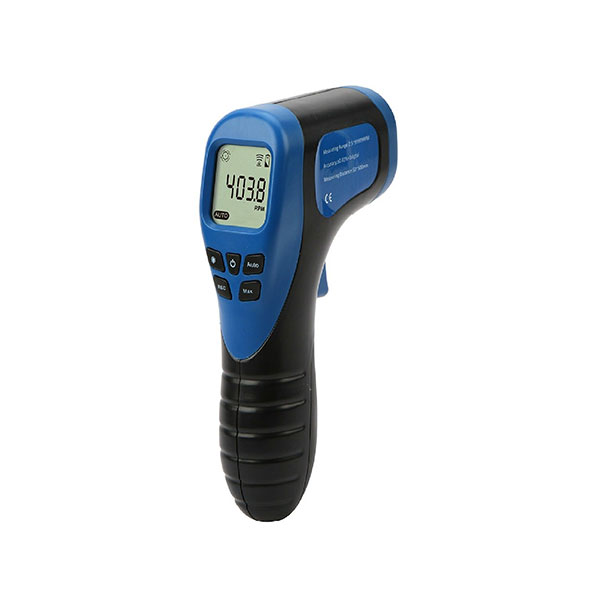Unlocking the Keys of Tachometers: Every Little Thing You Need to Learn About This Crucial Tool in Your Automobile
Comprehending the complexities of tachometers can offer important understandings right into your car's performance and maintenance demands. From determining engine rate to analyzing the data it presents, tachometers function as a vital tool for lorry proprietors and enthusiasts alike. By unwinding the enigmas behind this necessary instrument, you can unlock a wealth of info that can improve your driving experience and ensure the long life of your lorry.
Importance of Tachometers
The relevance of tachometers lies in their ability to give crucial real-time data concerning an engine's rotational speed, permitting for precise tracking and upkeep of equipment. By determining the revolutions per min (RPM) of an engine's crankshaft, tachometers provide useful insights into the engine's efficiency - tachometer. This information is necessary for ensuring that the engine runs within its optimal array, avoiding prospective damages from over-revving or underperforming
Tachometers play an important duty in helping drivers and technicians discover any kind of anomalies in the engine's rate, which can suggest concerns such as gas inefficiency, mechanical issues, or too much strain on the engine. By promptly identifying these problems via tachometer readings, maintenance can be carried out proactively, protecting against costly repair work and downtime in the lengthy run.
Furthermore, tachometers are especially essential in high-performance cars and equipment, where specific control over engine speed is necessary for optimal operation. Racing cars and trucks, airplane, and industrial equipment depend on tachometers to supply peak performance while maintaining security standards. In essence, tachometers are not just instruments for measuring rate however crucial devices for ensuring the smooth and efficient operation of engines throughout numerous applications.
Just How Tachometers Measure Engine Rate
Making use of sensing units that spot the frequency of electric pulses generated by the engine's ignition system, tachometers properly determine the rotational speed of an engine. By monitoring the price at which these pulses are received, tachometers provide real-time comments on how quickly the engine's crankshaft is revolving per minute, generally referred to as revolutions per min (RPM)
The tachometer's sensor, usually linked to the engine's ignition coil or spark plug wires, grabs the electric signals created each time a cylinder fires. These signals are then converted into RPM analyses presented on the gauge or tool cluster within the motorist's view. Tachometers can be analog or electronic, with modern vehicles commonly featuring electronic displays for exact and instantaneous RPM analyses.
This info is important for drivers to comprehend the engine's performance, stop over-revving, enhance gear moving, and ensure effective gas usage. By precisely determining engine speed, tachometers play a vital duty in assisting motorists run their vehicles safely and efficiently.
Interpreting Tachometer Analyses
Having a clear understanding of exactly how tachometers gauge engine rate establishes the foundation for efficiently analyzing the RPM readings presented. Translating tachometer analyses is important for optimum vehicle performance and engine wellness. RPM (Revolutions Per Minute) analyses on the tachometer show the speed at which the engine's crankshaft is turning. When the engine is idling, the tachometer needle commonly rests around 600-1000 RPM, depending on the vehicle. As you speed up, the RPM will certainly enhance, showing the engine's higher rotational rate. When moving gears in a manual transmission car, the RPM will certainly drop as you engage the clutch and adjustment equipments, then rise once more as you accelerate in the brand-new gear. Monitoring the tachometer can aid you determine the most reliable changing factors to make the most of gas economic climate and engine power. In addition, uncommon fluctuations or regularly high RPM analyses could indicate possible concerns with the engine that might call for professional attention. By taking notice of the tachometer readings and understanding exactly how to translate them, you can ensure your vehicle runs efficiently and successfully.


Tips for Using Tachometers Effectively
To boost driving effectiveness and enhance engine efficiency, what secret strategies can be applied for effectively utilizing tachometers? Tachometers are critical devices that offer real-time feedback on engine speed, allowing motorists to make educated decisions for much better efficiency - tachometer. Here are some suggestions for using tachometers properly:
Recognizing Optimal RPM Range: Acquaint on your own with the optimal RPM (Revolutions Per Minute) array for your automobile. This array ranges various vehicles and is usually indicated in the owner's manual. Keeping the engine within this array can improve gas effectiveness and prolong the engine's lifespan.
Changing Gears at the Correct Time: Use the tachometer to establish the very best time to move equipments. Upshifting prematurely or also late can result in lowered efficiency and performance. Purpose to shift gears when the RPM gets to the optimum range for the next equipment.
Keeping An Eye On Engine Stress And Anxiety: High RPMs for long term durations can strain the engine. Watch on the tachometer to avoid over-revving, particularly throughout velocity or when bring heavy lots.
Tachometers and Automobile Maintenance
When thinking about lorry upkeep, tachometers play an important duty in checking engine efficiency and detecting possible concerns. Tachometers give crucial data on engine rate, investigate this site permitting motorists and more information mechanics to guarantee that the engine is operating within the suggested RPM array. Frequently keeping track of the tachometer analyses can aid recognize issues such as engine misfires, worn-out ignition system, or concerns with the gas delivery system. By paying interest to the tachometer, vehicle drivers can stop extreme stress on the engine, which can result in pricey repair work down the line.
Along with finding potential concerns, tachometers can also aid in enhancing gas efficiency. By keeping the engine rate within the optimum range, motorists can boost their gas mileage and reduce fuel usage. This not only profits the chauffeur's budget yet also adds to environmental preservation by decreasing harmful discharges.
Verdict
